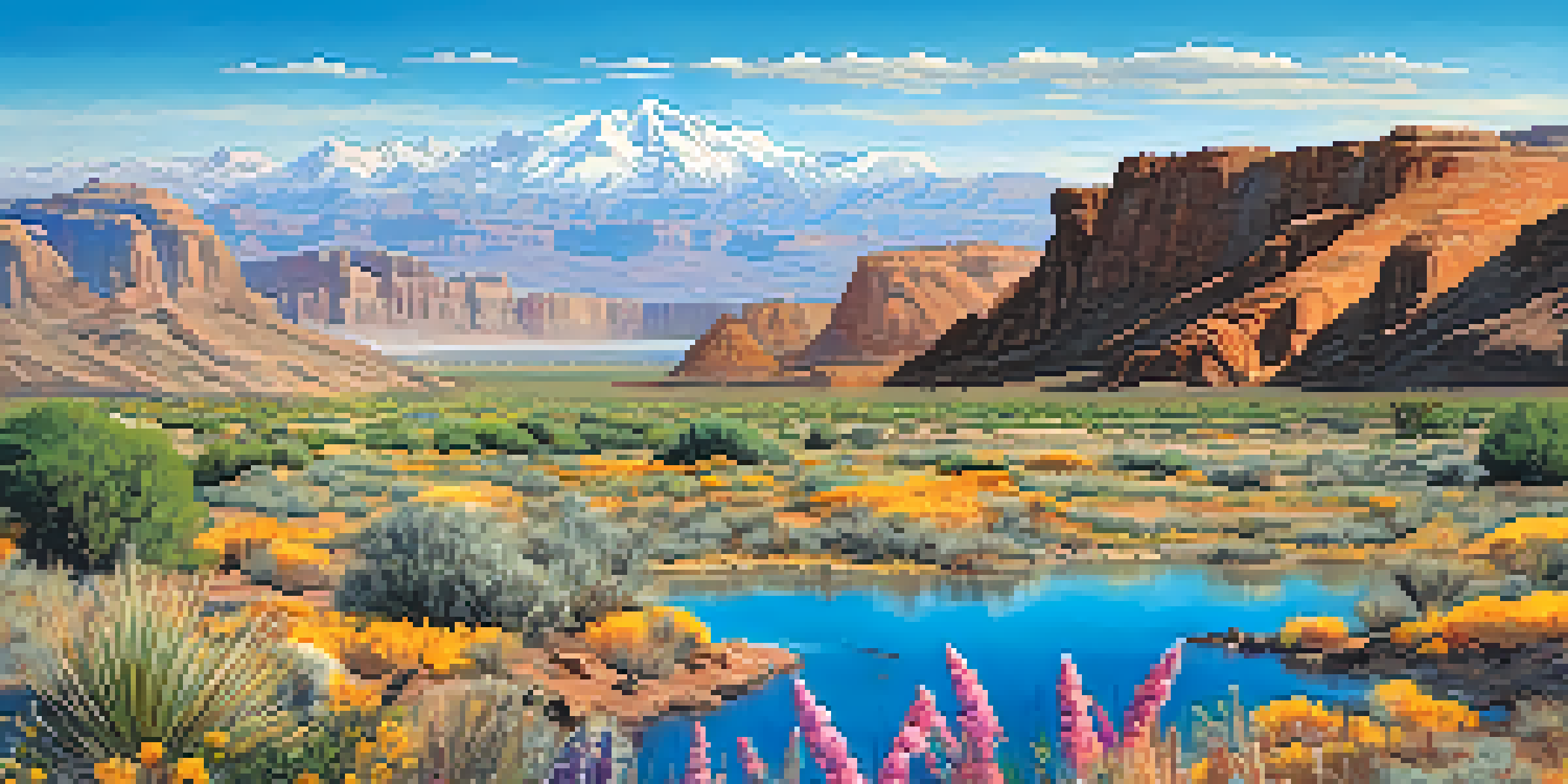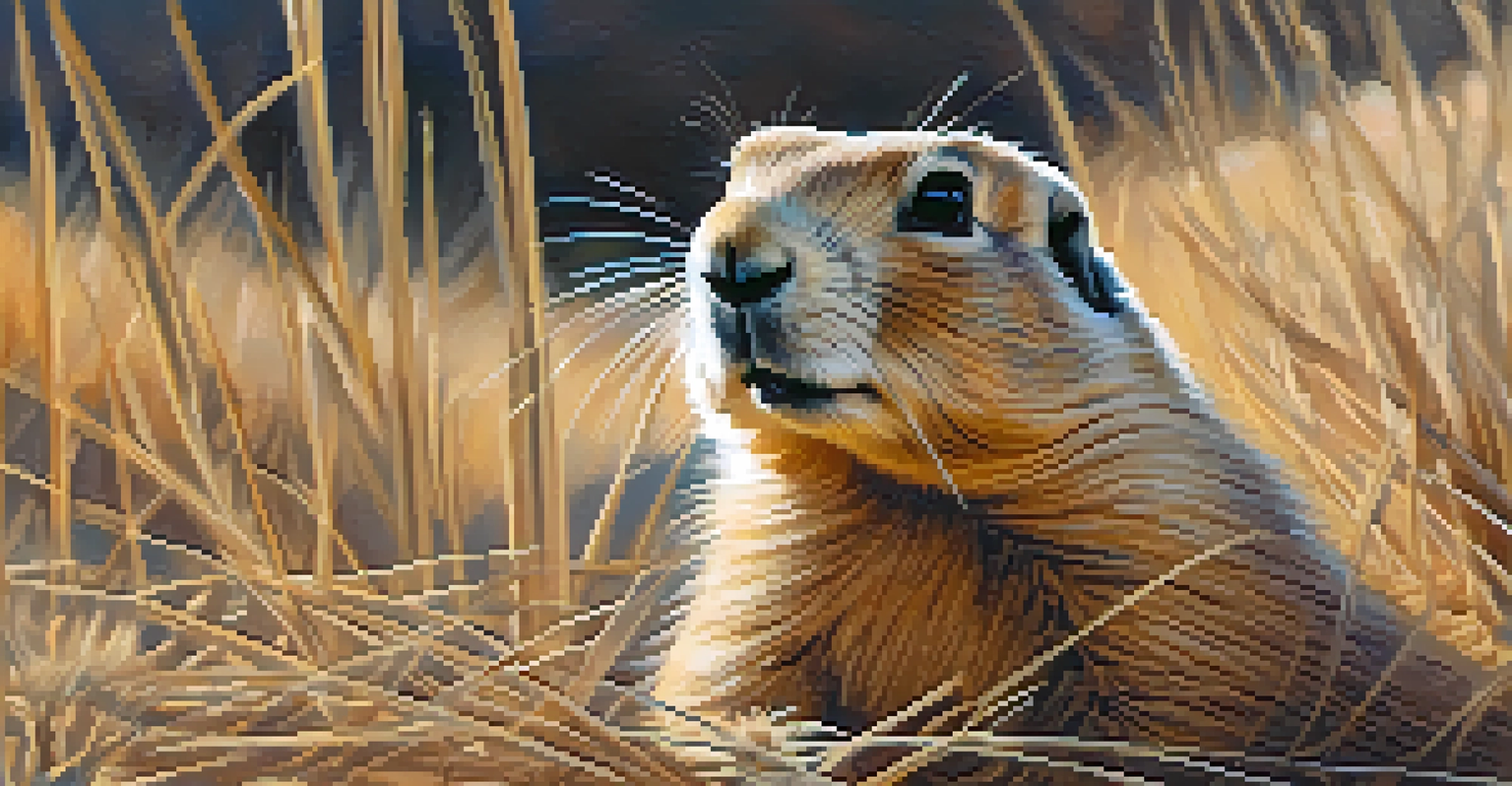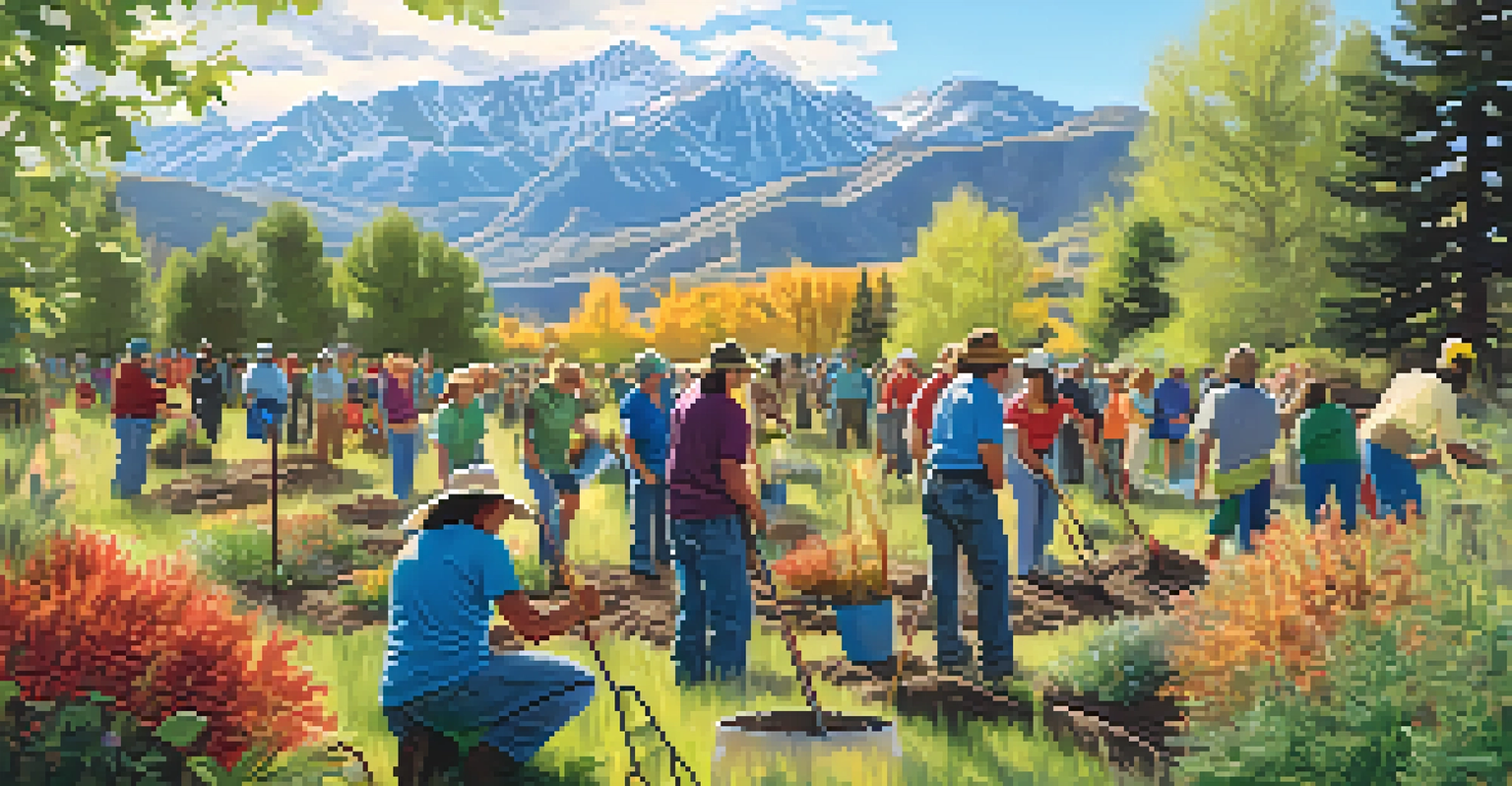Conservation Efforts in Utah: Protecting Endangered Species

Understanding Utah's Unique Ecosystem and Its Challenges
Utah is home to diverse ecosystems, ranging from deserts to mountains, each hosting unique wildlife. However, this rich biodiversity faces significant threats, primarily from habitat loss, climate change, and invasive species. Many animals and plants native to Utah are listed as endangered, which means their populations are dwindling, putting them at risk of extinction.
In every walk with nature one receives far more than he seeks.
For instance, the Utah prairie dog, a small burrowing rodent, has struggled due to habitat destruction and disease. This species plays a crucial role in its ecosystem by aerating the soil and providing food for predators. Understanding these challenges is the first step in implementing effective conservation strategies.
Conservation efforts in Utah aim to address these issues, ensuring that both the environment and its inhabitants can thrive. By focusing on habitat restoration and protection, these initiatives seek to create a sustainable future for Utah's unique wildlife.
Key Endangered Species in Utah and Their Status
Among the most notable endangered species in Utah is the California condor, a magnificent bird that nearly faced extinction in the 1980s. Conservationists have worked tirelessly to increase its population through captive breeding programs and habitat protection. Today, thanks to these efforts, the condor is slowly making a comeback in the wild.

Another species of concern is the Gunnison sage-grouse, which has seen its habitat diminished due to development and agricultural expansion. This bird is known for its unique mating rituals, which are crucial for its survival. Protecting its habitat is essential not only for the grouse but also for maintaining the ecological balance of its environment.
Biodiversity Faces Serious Threats
Utah's rich ecosystems are under threat from habitat loss, climate change, and invasive species, leading to the endangerment of native wildlife.
These examples highlight the importance of targeted conservation efforts. By focusing on specific species and understanding their needs, Utah can take significant steps toward preserving its natural heritage.
Government Initiatives for Wildlife Protection
The state of Utah has implemented several government-led initiatives aimed at protecting endangered species. One prominent program is the Utah Division of Wildlife Resources, which collaborates with federal agencies to monitor and manage wildlife populations. This partnership ensures a comprehensive approach to conservation, addressing both state and national concerns.
The Earth does not belong to us: we belong to the Earth.
Additionally, funding for habitat restoration projects has increased, allowing for the revitalization of ecosystems critical to endangered species. These projects often involve community engagement, where local residents participate in restoration efforts, fostering a sense of stewardship for their environment.
Through these initiatives, Utah is demonstrating a commitment to wildlife protection. Government actions, combined with community involvement, create a powerful force for positive change in the state's natural landscapes.
Community Involvement in Conservation Efforts
Community involvement plays a crucial role in the success of conservation efforts in Utah. Local residents often become the eyes and ears on the ground, reporting sightings of endangered species and helping to monitor their habitats. This grassroots approach fosters a deeper connection between people and the natural world.
Organizations like the Utah Society for Environmental Education actively engage the public through workshops, volunteer opportunities, and educational programs. These initiatives empower individuals to take action in protecting their local environment, creating a culture of conservation.
Community Drives Conservation Efforts
Local residents play a vital role in conservation by reporting endangered species sightings and participating in habitat restoration initiatives.
By harnessing community passion and knowledge, conservation efforts can be more effective and sustainable. When people feel invested in their local ecosystems, they are more likely to support and participate in protective measures.
The Role of Nonprofits in Species Conservation
Numerous nonprofit organizations are dedicated to preserving Utah's endangered species, often filling gaps left by government initiatives. Groups like the Utah Wildlife Federation work tirelessly to raise awareness about the plight of endangered species and advocate for policies that protect their habitats. Their efforts are crucial in mobilizing public support and funding for various conservation projects.
Nonprofits often engage in direct action, such as habitat restoration and species monitoring, which are essential for the survival of endangered wildlife. These organizations frequently collaborate with government agencies, creating a united front in the fight against extinction.
Through education and advocacy, nonprofits play a vital role in conservation. Their dedication not only helps protect endangered species but also inspires future generations to appreciate and safeguard Utah’s natural treasures.
Scientific Research and Its Impact on Conservation
Scientific research is the backbone of effective conservation strategies in Utah. Studies conducted by universities and research institutions help to identify the needs of endangered species and the specific threats they face. This data-driven approach enables conservationists to create targeted plans that address the most pressing issues.
For instance, research on the migration patterns of the Colorado River fish has led to improved habitat management practices that support their survival. By understanding these patterns, conservationists can ensure that essential spawning grounds are protected during critical times of the year.
Collaboration Is Key for Future Success
A united effort among government, nonprofits, and communities is essential to address ongoing challenges and protect Utah's endangered species.
Moreover, research often uncovers new insights into species behaviors and ecology, which can inform future conservation efforts. By prioritizing scientific inquiry, Utah is better equipped to protect its threatened wildlife.
The Future of Conservation in Utah: Challenges Ahead
Despite significant progress in conservation efforts, challenges remain for Utah's endangered species. Climate change poses an ongoing threat, affecting habitats and food sources. As temperatures rise and weather patterns shift, wildlife must adapt to new conditions, often struggling to survive.
Additionally, urban development continues to encroach on natural habitats, further fragmenting ecosystems. This loss of habitat can lead to increased human-wildlife conflicts, making it crucial for conservationists to find innovative solutions to coexist with nature.

Looking ahead, collaboration between government, nonprofits, and communities will be essential. By working together and addressing these challenges head-on, Utah can create a resilient future for its endangered species and the ecosystems they inhabit.